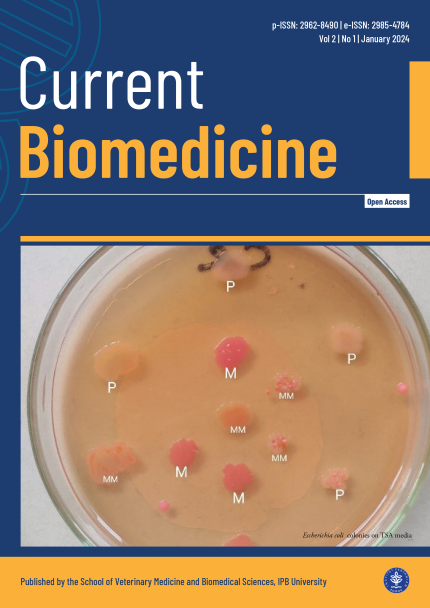Resistance of pathogenic Escherichia coli isolated from laying hens against several antibiotics
Abstract
Background: Inappropriate use of antibiotics in livestock causes the emergence of bacterial resistance to antibiotics. One of the bacteria that has been reported to be resistant is Escherichia coli so that the treatment for this bacterial infection is less effective. Objective: The purpose of this study was to describe the resistance of pathogenic E. coli originating from cloacal swabs of laying hens to antibiotics. Methods: A total of 20 cloacal swab samples identified the presence of E. coli through macroscopic, microscopic observations, biochemical tests, and carbohydrate fermentation so that 15 E. coli isolates were obtained. Pathogenicity test was carried out using congo red media. Pathogenic isolates were tested for their sensitivity against 6 types of antibiotics using the Kirby-Baurer disk diffusion susceptibility test. Results: The research isolated 15 isolates and congo red media test found out 4 isolates were pathogenic E. coli. The results showed that 75% of the isolates were resistant to azithromycin, 100% of the isolates were intermediately resistant to doxycycline and ciprofloxacin. Meanwhile, 75% of isolates were still sensitive to gentamicin and 100% of isolates were sensitive to chloramphenicol and amoxicillin. Conclusion: This study successfully isolated pathogenic E. coli from laying hens that were resistant to several antibiotics tested.













